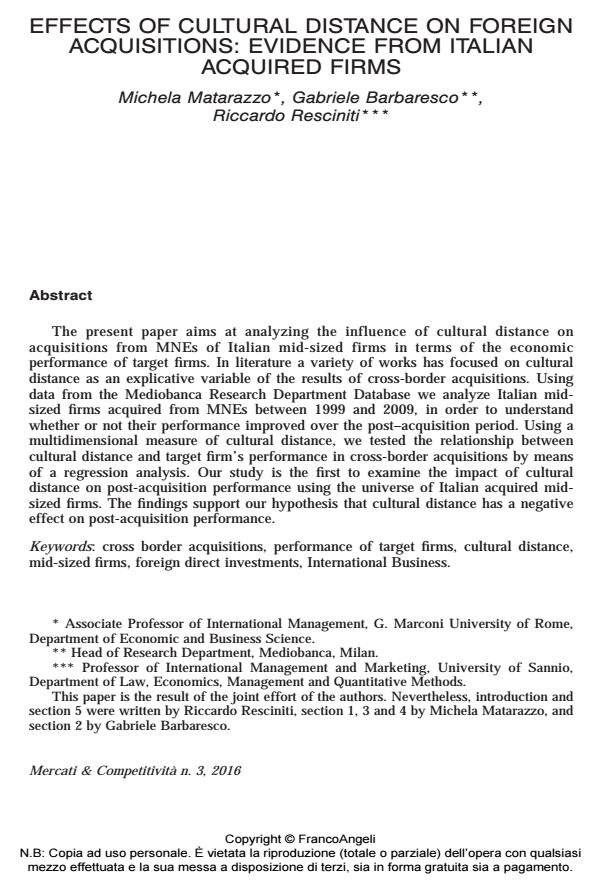Effects of cultural distance on foreign acquisitions: evidence from italian acquired firms
Journal title MERCATI & COMPETITIVITÀ
Author/s Michela Matarazzo, Gabriele Barbaresco, Resciniti Riccardo
Publishing Year 2016 Issue 2016/3
Language English Pages 23 P. 159-181 File size 471 KB
DOI 10.3280/MC2016-003009
DOI is like a bar code for intellectual property: to have more infomation
click here
Below, you can see the article first page
If you want to buy this article in PDF format, you can do it, following the instructions to buy download credits

FrancoAngeli is member of Publishers International Linking Association, Inc (PILA), a not-for-profit association which run the CrossRef service enabling links to and from online scholarly content.
The present paper aims at analyzing the influence of cultural distance on acquisitions from MNEs of Italian mid-sized firms in terms of the economic performance of target firms. In literature a variety of works has focused on cultural distance as an explicative variable of the results of cross-border acquisitions. Using data from the Mediobanca Research Department Database we analyze Italian midsized firms acquired from MNEs between 1999 and 2009, in order to understand whether or not their performance improved over the post-acquisition period. Using a multidimensional measure of cultural distance, we tested the relationship between cultural distance and target firm’s performance in cross-border acquisitions by means of a regression analysis. Our study is the first to examine the impact of cultural distance on post-acquisition performance using the universe of Italian acquired midsized firms. The findings support our hypothesis that cultural distance has a negative effect on post-acquisition performance.
Keywords: Cross border acquisitions, performance of target firms, cultural distance, mid-sized firms, foreign direct investments, International Business.
- When Digitalization Meets Omnichannel in International Markets: A Case Study from the Agri-Food Industry Maria Vincenza Ciasullo, Raffaella Montera, Francesco Mercuri, Shame Mugova, in Administrative Sciences /2022 pp.68
DOI: 10.3390/admsci12020068
Michela Matarazzo, Gabriele Barbaresco, Resciniti Riccardo, Effects of cultural distance on foreign acquisitions: evidence from italian acquired firms in "MERCATI & COMPETITIVITÀ" 3/2016, pp 159-181, DOI: 10.3280/MC2016-003009